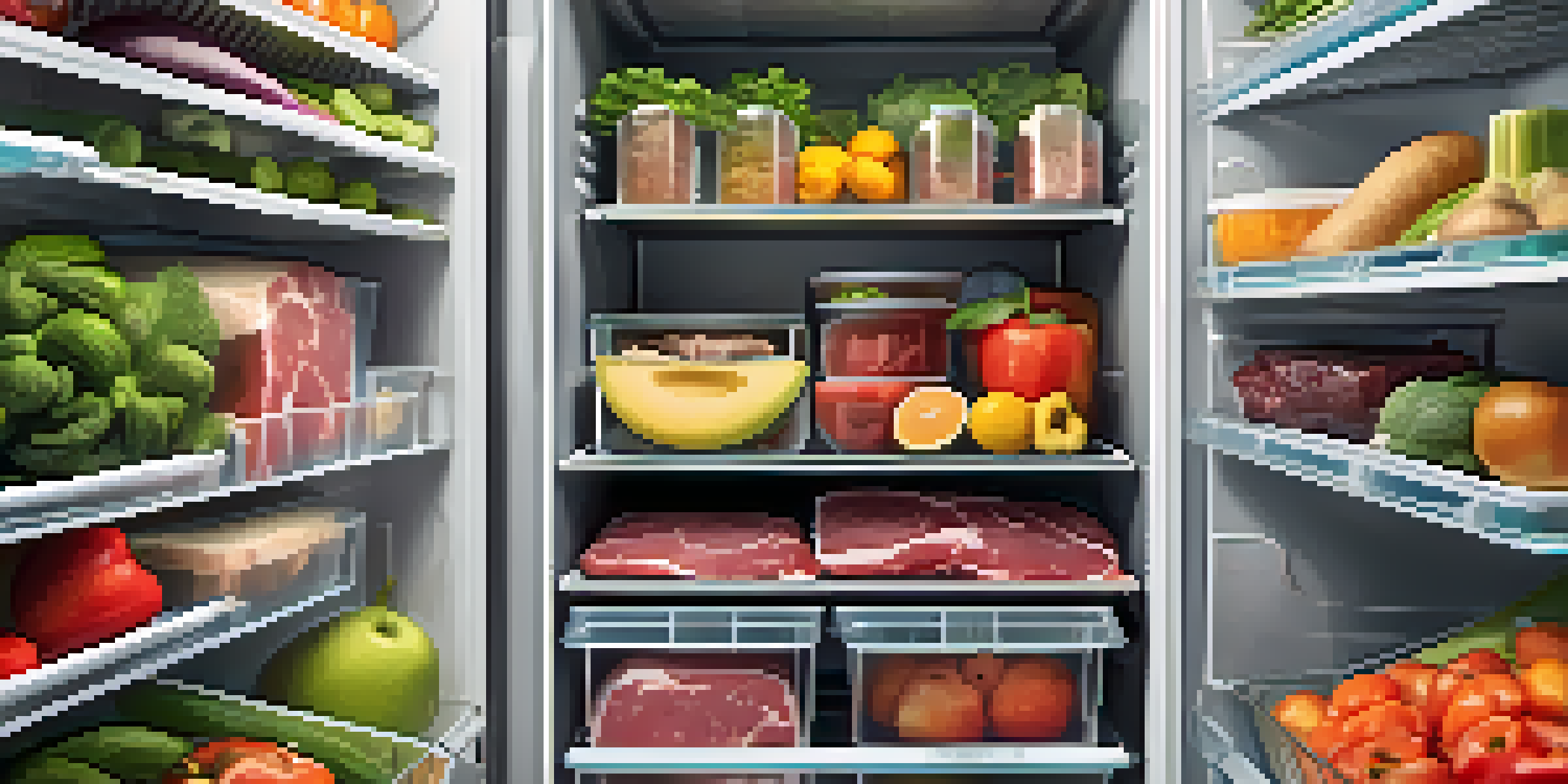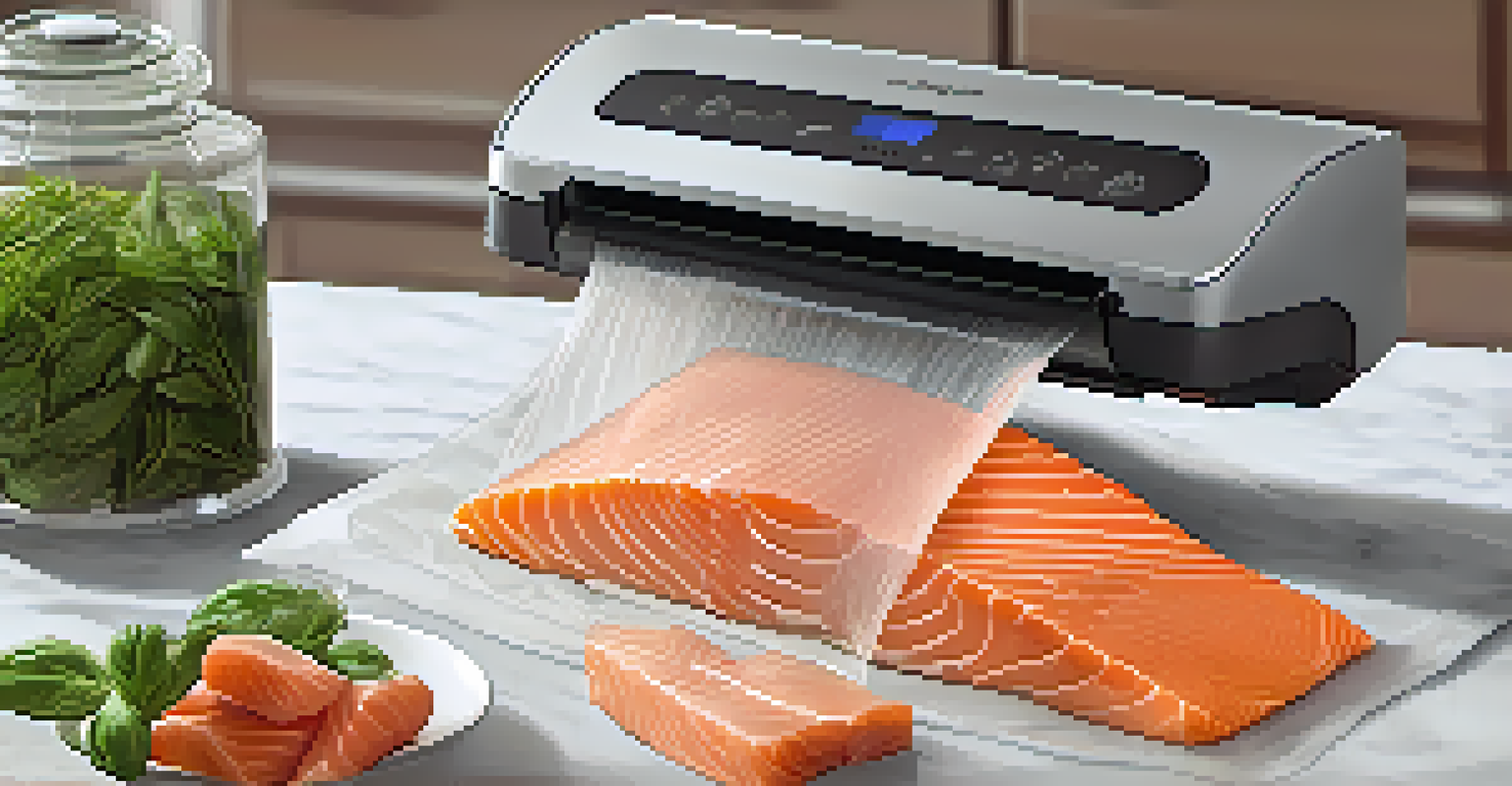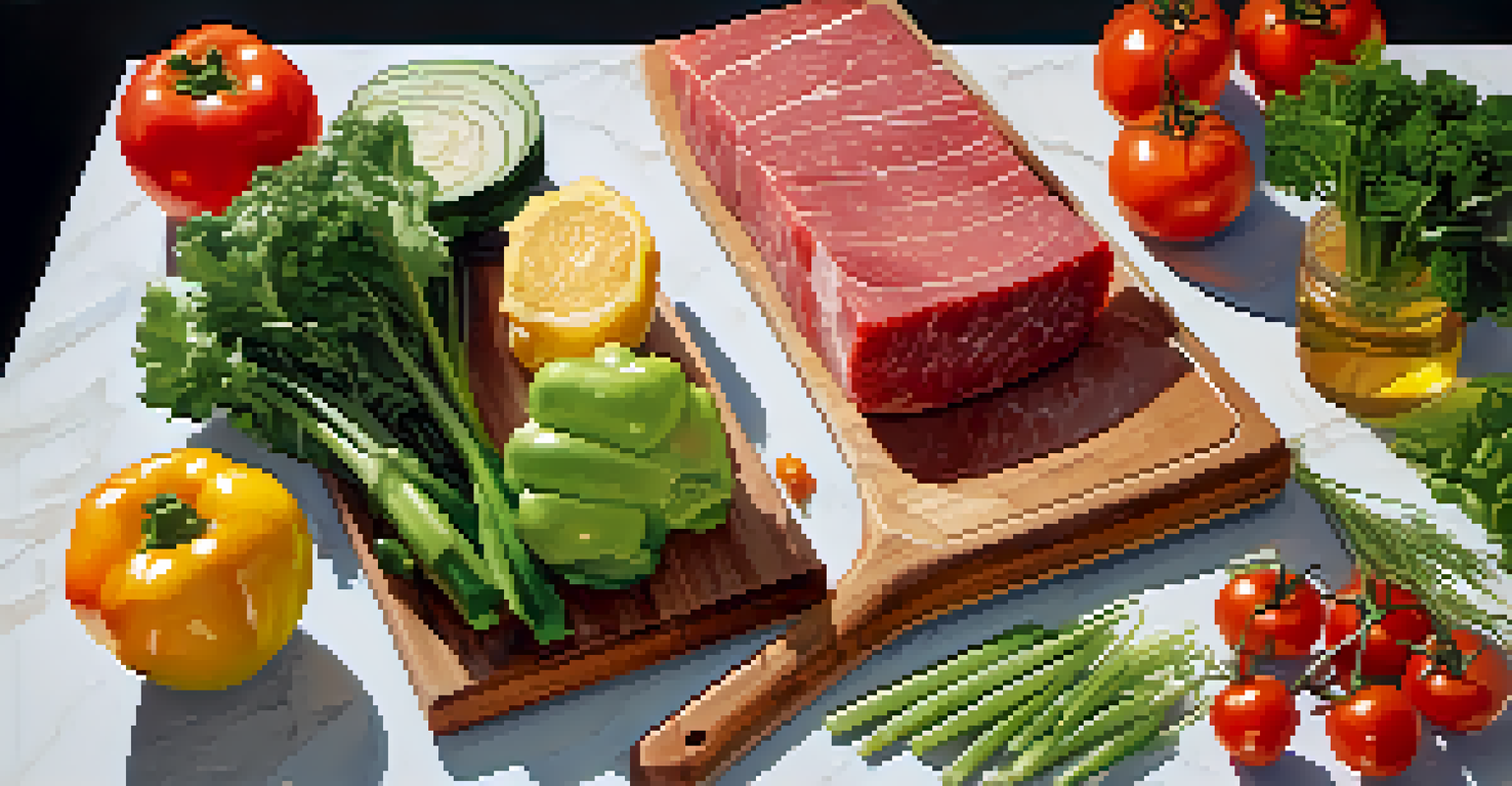Best Practices for Storing Raw Meals to Maintain Freshness

Understanding the Importance of Proper Meal Storage
Storing raw meals correctly is crucial for maintaining their freshness and safety. When food is stored improperly, it can lead to spoilage or foodborne illnesses, which can be detrimental to health. By understanding the principles of food storage, you can ensure that your meals remain safe and tasty.
The only thing worse than a bad meal is a bad meal that could have been good if it had been stored properly.
One of the primary factors affecting food freshness is temperature. Keeping your raw meals at the right temperature can slow down the growth of harmful bacteria. This means knowing when to refrigerate, freeze, or leave food at room temperature based on the type of ingredients you are working with.
Additionally, proper storage techniques can help preserve the nutritional value of your meals. Fresh ingredients are not just about taste; they also provide essential vitamins and minerals. By following best practices, you can enjoy both the flavor and health benefits of your raw meals.
Choosing the Right Containers for Storage
The type of container you use can significantly impact the freshness of your raw meals. Airtight containers are ideal for preventing moisture and air from spoiling your food. Glass or BPA-free plastic containers work well because they are non-reactive and can be easily cleaned.

Using the right size container is also essential. If a container is too large, it can allow air to circulate, leading to faster spoilage. On the other hand, overly packed containers may not allow for proper air circulation. Finding a balance is key.
Proper Meal Storage Ensures Safety
Understanding the principles of food storage, including temperature control, can prevent spoilage and foodborne illnesses.
Additionally, consider labeling your containers with dates. This simple practice can help you keep track of how long your raw meals have been stored and prompt you to use them before they go bad. It’s a small step that can save you from food waste.
Temperature Control: Keeping It Cool
Temperature control is one of the most critical aspects of storing raw meals. Refrigerators should be set to 40°F (4°C) or below to keep food safe. Investing in a thermometer for your fridge can help you monitor temperatures and avoid potential problems.
Food safety is not a privilege, it’s a right, and it starts with how we store and handle our meals.
When freezing raw meals, it’s important to do so quickly. This helps maintain the texture and flavor of the food. Ideally, raw meals should be frozen as soon as possible after preparation, and they should be stored in portions that are easy to defrost when needed.
Moreover, avoid frequent temperature fluctuations. Opening the fridge door too often or leaving the freezer open can lead to temperature changes that might compromise food quality. Being mindful of how you access your stored meals can make a difference in their longevity.
Proper Food Separation Techniques
Separating different types of raw meals is essential for preventing cross-contamination. For instance, keep raw meats separate from fruits and vegetables to avoid spreading harmful bacteria. Using color-coded cutting boards can make this task easier and more efficient.
Additionally, store raw meals in designated areas in your fridge or freezer. For example, allocate a specific shelf for raw proteins and another for produce. This not only helps with organization but also ensures that you are always aware of where items are located.
Use Airtight Containers for Freshness
Choosing the right airtight containers helps maintain the quality and nutritional value of your raw meals.
By practicing proper food separation, you not only maintain freshness but also prioritize food safety. It’s a simple yet effective way to minimize risks and keep your raw meals ready for cooking.
Using Vacuum Sealing for Extended Freshness
Vacuum sealing is an excellent method for extending the freshness of raw meals. By removing air, vacuum-sealed bags minimize oxidation and reduce the growth of bacteria. This technique can be especially beneficial for meats, fish, and vegetables.
Moreover, vacuum-sealed meals can be stored in the freezer without taking up much space. You can stack them neatly, making it easier to organize your freezer and find what you need quickly. This method not only saves space but also prolongs the shelf life of your meals.
Remember, vacuum sealing isn’t just for freezing; it can also be used for refrigeration. If you plan to consume your raw meals within a few days, vacuum sealing them can help maintain their freshness longer than traditional storage methods.
Labeling and Organizing Your Raw Meals
An effective labeling system can enhance your meal storage practices significantly. By labeling containers with the contents and storage date, you can quickly identify what to use first, minimizing the risk of food waste. It’s a simple practice that keeps your meals organized.
Organizing your fridge and freezer can also play a role in maintaining freshness. Place older items at the front, so they are used before newer ones. This method, often known as 'first in, first out,' helps ensure that food is consumed while it's still fresh.
Monitor Freshness to Avoid Waste
Regularly checking for signs of spoilage and being mindful of storage times can help ensure the safety and taste of your food.
Additionally, consider using clear containers. This allows you to see what you have at a glance, making it easier to plan meals and reduce the chances of forgetting about ingredients. An organized space can lead to better meal planning and a more enjoyable cooking experience.
Monitoring Freshness: When to Toss Raw Meals
Even with the best storage practices, it’s important to monitor the freshness of your raw meals. Always check for signs of spoilage, such as off smells, discoloration, or unusual textures. Trust your senses—if something seems off, it’s better to err on the side of caution.
Mind the recommended storage times for different ingredients. For instance, raw poultry should generally be cooked or frozen within 1-2 days, while vegetables may last longer. Familiarizing yourself with these timelines can help you use ingredients at their best.

Lastly, don't hesitate to toss anything that doesn’t look or smell right. Food safety is paramount, and it’s better to discard questionable items than risk your health. Regularly assessing your stored meals can help keep your kitchen safe and your meals delicious.